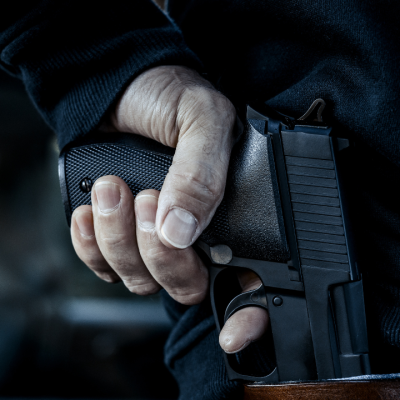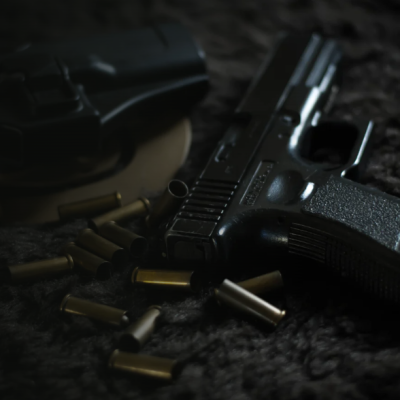The United States is a diverse country with varying approaches to gun ownership and firearm regulations. While federal laws provide a baseline, individual states have the authority to shape their own gun laws, leading to a wide range of policies and attitudes toward firearms.
In this article, we’ll explore the Top 10 Most Gun Friendly States in the U.S., where gun owners can find a welcoming environment for their interests and rights. Additionally, we’ll delve into a crucial aspect of responsible gun ownership: understanding what to do if you ever find yourself in a situation where you must draw your gun for self-defense.
Knowing the legal and ethical considerations in each state is vital to ensure you make the right choices in critical moments. So, let’s embark on a journey to discover the most firearm-friendly states and how to navigate the complexities of self-defense within them.

Top 10 Most Gun Friendly States
1. Alaska
- Alaska has strong protections for the use of deadly force in self-defense, commonly referred to as the “stand your ground” principle.
- Check It Out: Alaska Gun Laws
2. Arizona
- Arizona also has “stand your ground” laws, making it easier to use deadly force in self-defense.
- Check It Out: Arizona Gun Laws
3. Wyoming
- Wyoming generally allows the use of force in self-defense, but it’s essential to act reasonably and proportionally.
- Check It Out: Wyoming Gun Laws
4. Oklahoma
- Oklahoma has “stand your ground” laws, but the use of deadly force must be reasonable and necessary for self-defense.
- Check It Out: Oklahoma Gun Laws
5. Idaho
- Idaho has a “stand your ground” law, which allows the use of force in self-defense.
- Check It Out: Arizona Gun Laws
6. Kansas:
- Kansas follows the “stand your ground” principle, but the use of force must be reasonable and necessary for self-defense.
- Check It Out: Kansas Gun Laws
7. Kentucky:
- Kentucky allows the use of force in self-defense, but the situation must warrant such action.
- Check It Out: Kentucky Gun Laws
8. Missouri:
- Missouri has “stand your ground” laws, making it easier to use deadly force in self-defense.
- Check It Out: Missouri Gun Laws
9. South Dakota:
- South Dakota allows the use of force in self-defense, but it should be reasonable and necessary.
- Check It Out: South Dakota Gun Laws
10. Texas:
- Texas has “stand your ground” laws, making it easier to use deadly force for self-defense. However, the use of force should be reasonable and necessary.
- Check It Out: Texas Gun Laws
What Happens When You Draw Your Gun and When You Shoot Someone?
While you might be a resident of one of the top states, knowing the state has your 2nd amendment back is one thing- but the decision to draw a firearm and, more significantly, to use it to shoot someone, is one that should never be taken lightly. It’s a critical moment that can have life-altering consequences for all parties involved. Understanding what happens when you draw your gun and the legal and ethical implications of shooting someone is crucial for responsible gun ownership.
Drawing Your Gun
Drawing your firearm is a serious action that should only be taken when you genuinely believe your life or the lives of others are in imminent danger. Here’s what typically happens when you draw your gun:
- Assessment: Before drawing your gun, you must quickly assess the situation. If possible, identify the threat and any potential escape routes. If there’s no immediate danger, it may be best to keep your gun holstered.
- Verbal Warning: If time allows and it’s safe to do so, give a verbal warning to the threat, stating your intention to defend yourself if necessary. This can help establish your actions as self-defense.
- Draw with Care: If you determine that using your firearm is the only option, draw your gun carefully and maintain muzzle discipline, ensuring it is pointed in a safe direction. Keep your finger off the trigger until you’re ready to fire.
- Shoot or Not: The decision to shoot should be your last resort. You must reasonably believe that your life is in danger, and the use of deadly force is the only way to protect yourself or others.
Shooting Someone
The decision to shoot someone is a grave one that can have legal, emotional, and moral ramifications. Here’s what happens if you shoot someone:
- Call 911: Immediately call 911 to report the incident and request medical assistance. Provide your location and a description of the situation.
- Render Aid (if safe): If it is safe to do so, offer first aid to the injured person while waiting for medical professionals to arrive. This demonstrates a commitment to saving lives.
- Police Arrival: The police will respond to the scene. When they arrive, follow their instructions carefully. Inform them that you acted in self-defense and cooperate fully.
- Legal Consequences: You may be detained and questioned by law enforcement. The legal outcome will depend on the circumstances, self-defense laws in your jurisdiction, and whether your actions were deemed reasonable and necessary.
- Legal Defense: It’s crucial to seek legal representation immediately. A qualified attorney can help protect your rights and navigate the legal process.
- Emotional Impact: Shooting someone, even in self-defense, can have a profound emotional impact. Seek counseling or support to help cope with the experience.
Drawing your gun and shooting someone is not a decision to be made lightly. Responsible gun ownership requires a deep understanding of self-defense laws, ethical considerations, and the potential consequences of your actions. It is always best to prioritize de-escalation and avoid using deadly force whenever possible. Being prepared and educated can help you make the right choices in high-stress situations and minimize the potential legal and emotional aftermath of such a critical event.
RANKED Conclusion
In conclusion, exploring the top 10 most gun-friendly states has shed light on the diverse range of regulations and attitudes towards firearms across the United States. Whether you’re a staunch supporter of the Second Amendment or someone looking to better understand these differences, it’s crucial to remember that carrying a firearm comes with great responsibility. Always be well-versed in local laws, practice safe and responsible gun ownership, and prioritize de-escalation and conflict resolution when carrying a weapon. Regardless of where you are, knowledge, caution, and respect for others should be your constant companions when exercising your right to bear arms.







